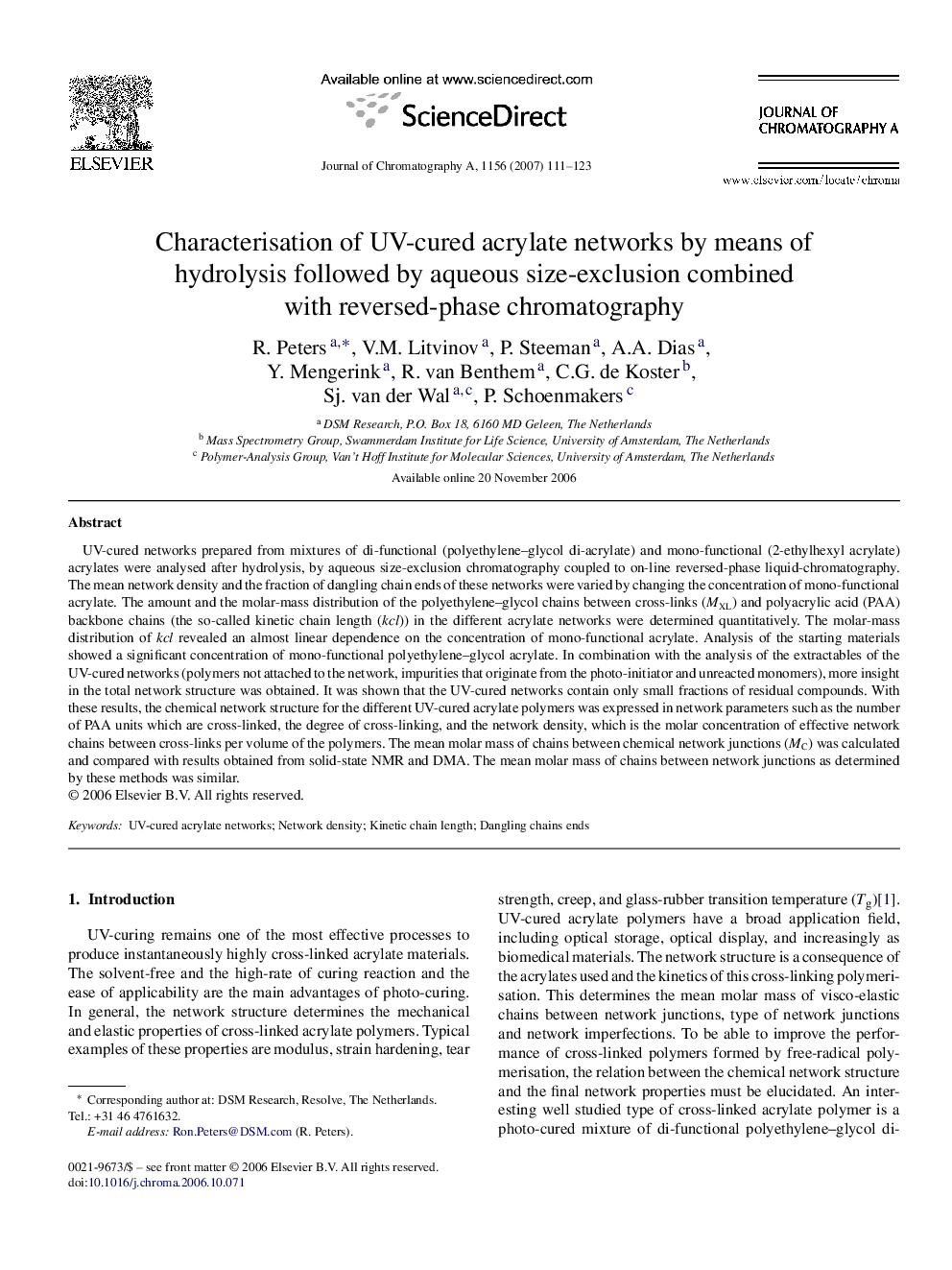| Article ID | Journal | Published Year | Pages | File Type |
|---|---|---|---|---|
| 1207174 | Journal of Chromatography A | 2007 | 13 Pages |
UV-cured networks prepared from mixtures of di-functional (polyethylene–glycol di-acrylate) and mono-functional (2-ethylhexyl acrylate) acrylates were analysed after hydrolysis, by aqueous size-exclusion chromatography coupled to on-line reversed-phase liquid-chromatography. The mean network density and the fraction of dangling chain ends of these networks were varied by changing the concentration of mono-functional acrylate. The amount and the molar-mass distribution of the polyethylene–glycol chains between cross-links (MXL) and polyacrylic acid (PAA) backbone chains (the so-called kinetic chain length (kcl)) in the different acrylate networks were determined quantitatively. The molar-mass distribution of kcl revealed an almost linear dependence on the concentration of mono-functional acrylate. Analysis of the starting materials showed a significant concentration of mono-functional polyethylene–glycol acrylate. In combination with the analysis of the extractables of the UV-cured networks (polymers not attached to the network, impurities that originate from the photo-initiator and unreacted monomers), more insight in the total network structure was obtained. It was shown that the UV-cured networks contain only small fractions of residual compounds. With these results, the chemical network structure for the different UV-cured acrylate polymers was expressed in network parameters such as the number of PAA units which are cross-linked, the degree of cross-linking, and the network density, which is the molar concentration of effective network chains between cross-links per volume of the polymers. The mean molar mass of chains between chemical network junctions (MC) was calculated and compared with results obtained from solid-state NMR and DMA. The mean molar mass of chains between network junctions as determined by these methods was similar.
